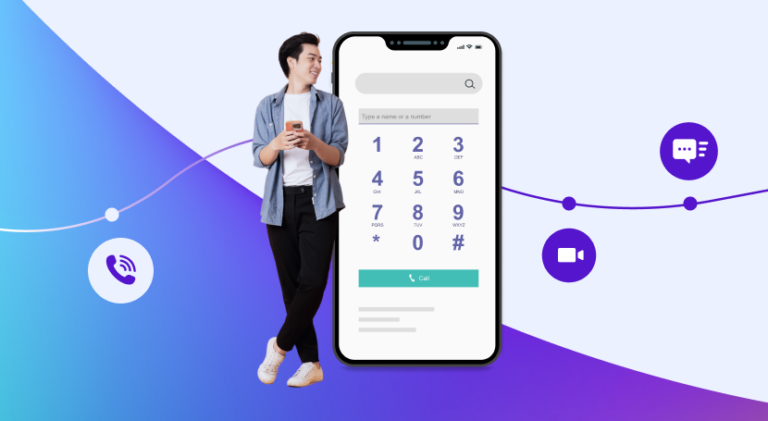Toku enables global VoIP calling within Microsoft Teams so that enterprises can move their corporate telephony to the cloud, and get all the calling features they need, whilst using their Microsoft 365 license.
If there’s one thing you can say for sure about the human race – we know how to adapt and survive.
Even in the midst of the upheaval of the Covid-19 pandemic, we’ve found new ways of working and living.
Over the past year, we’ve learned to take advantage of existing and emerging digital technology to create order from the chaos.
The “new normal” is digital.
The future of customer interaction is digital
Stuck in their homes under lockdown, consumers worldwide have turned en-masse to digital channels. Customer interactions are increasingly taking place remotely through the digital realm.
It’s little surprise that McKinsey identified the Covid-19 crisis as a catalyst for the digitisation of customer interactions, accelerating progress by three years globally, and four years in the Asia Pacific region.
It’s likely that these accelerated changes will have profound and lasting effects on customer preferences. The convenience and speed of being able to communicate through multiple digital channels means that digital-led experiences will continue to grow in popularity.
For this reason, companies that innovate rapidly and implement strong digitisation strategies will gain an advantage and remain successful.
But, before you run out and invest in chatbots and auto-responder systems, research suggests that there is still a place for human contact in the digital customer experience. Even before the pandemic, 75% of customers preferred to interact with a human than an automated system.
Clearly, there is a need for a blend of digital automation and good old fashioned human interaction.
Striking a balance between automation and the human touch
Real and automated conversations can work alongside each other. It’s possible to blend digital and human interactions to work in harmony, as long as you have the right systems in place.
To strike the right balance, you need to identify what level of automation your ideal customer is comfortable with. You should also find out how much value they place on human interaction and in which situations they view it as preferable. Once you know this, you can create a seamless digital customer experience.
Want to find out what Singapore consumers expect in their brand interactions?
–> Get your hands on Toku’s Consumer Engagement Report 2022 now, for all the insights we discovered in our research.
How scalable is all this for small businesses?
Small businesses are obviously limited by the size of their budget and available resources. But this doesn’t mean they can’t scale up their digital customer interactions.
The main way to do this efficiently is to identify and prioritise the most complex customer touchpoints and the ones that require the most trust building. These are the times when the human touch is most valuable.
For example, human interactions can be prioritised for things like:
- Product demos
- Explaining benefits and value of products or services
- Sales pitches
- Negotiating contracts
- Complex after sales support.
In other words, a hybrid model should be employed, where tedious admin tasks are automated and personal conversations are reserved for high-trust situations and resolution of customer issues.
By enabling voice and video web calls through real-time comms technology, you allow customers to reach you when they really need to, from wherever they are. This adds a personal touch to your business that will set you apart from the competition.
Adding the human touch – through voice
The humble telephone call is still the preferred method for personal interactions with your customers.
In fact, Toku’s Consumer Engagement Research in 2022 found that 71% of consumers would be frustrated if a company has no local number to call when needed. Furthermore, we discovered 67% of consumers prefer to communicate in-app to obtain more information or resolve issues.
So when you put the two statistics together, we have a strong case for embedding in-app calling in your app.
 Nora Huin
Nora Huin 


 Girish Dharmaraj
Girish Dharmaraj 
 Thomas Laboulle
Thomas Laboulle 
 V K Sanjeed
V K Sanjeed